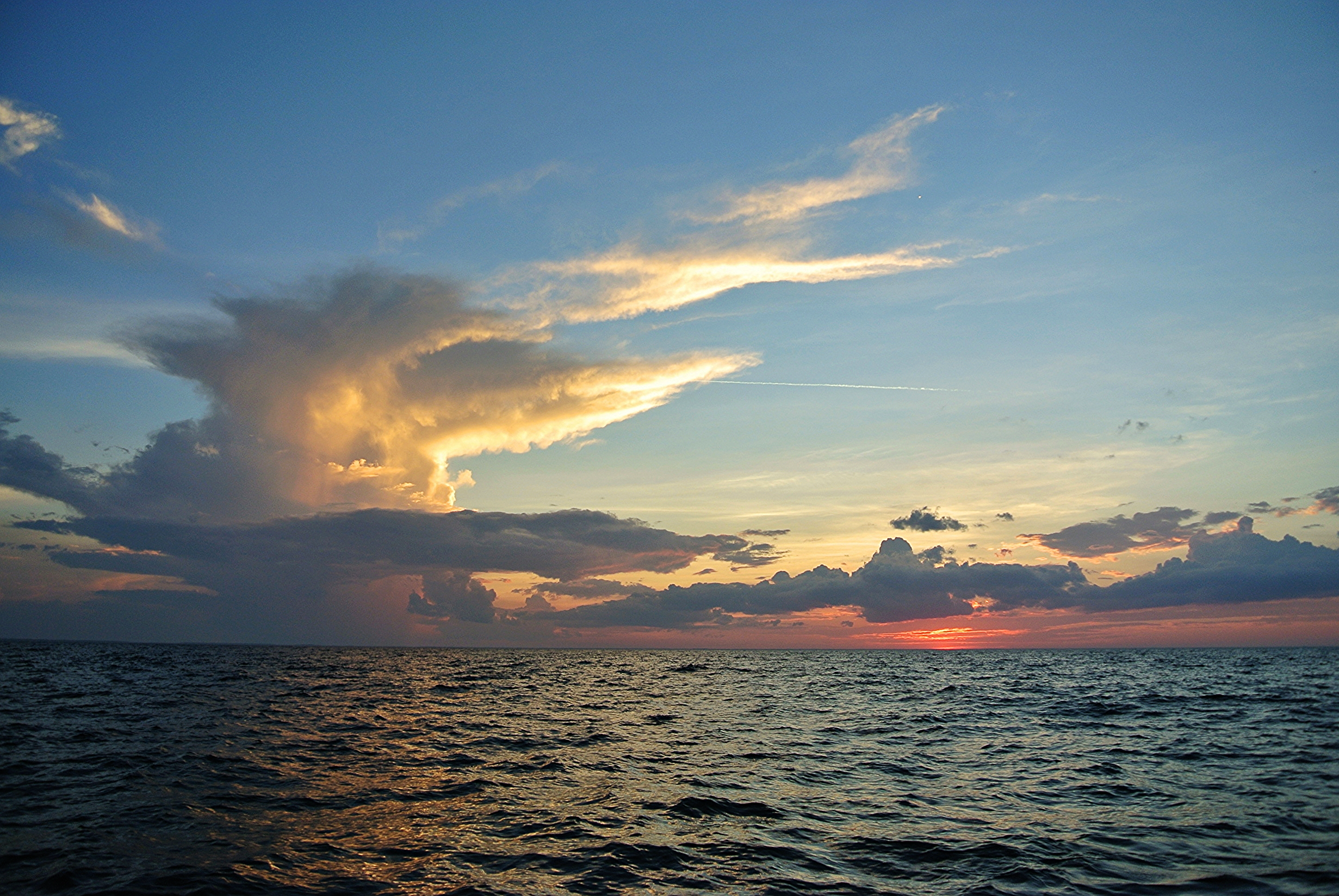We lowered the mainsail because it kept slating with the seas. We didn't loose too much speed over ground because the main was actually robbing wind from the drifter. When the mainsail was out of the equation, the staysail and drifter were able to fill up and pull us along.
Ocean sailing is very relaxing and peaceful. Most people would probably crank up their engine and power along at hull speed in these conditions, but we are not capable of doing that with our electric engine and tiny battery bank.
Many people view this as a drawback to not having a long distance motor, but we view this as an advantage. If we had a long distance motor, we would be tempted to crank up the engine and power our way through the seas instead of relaxing and enjoying the ocean and all of its beauty.
We don't cover many miles on these calm days, but we don't feel exhausted at the end of the day either. The whole day is spent lounging around, reading, eating, and doing whatever strikes your fancy. There is no rush when under sail on a calm day! We know the winds will eventually change and we will end up sailing along under reduced sails, blasting our way through the ocean at 8 to 9 knots. For the time being, we enjoy our peaceful days where we mosey along at 2 to 4 knots.
If you are planning an ocean voyage, you should consider your time at sea a gift of peace and relaxation. Take advantage of your time at sea where you have minimal distractions and all the time in the world! Each day begins when you wake up and ends when you feel like it, rather than when your alarm clock goes off and when your shift ends. If you find yourself on a calm day with no wind, consider leaving the engine off to enjoy the peace and quiet of the sea instead of listening to the roar of your engine.
Ocean sailing is going to mostly consist of these calm relaxing days with a few days of storms scattered in there. The stormy days will give plenty of notice in the ways of cloud formations and increased ocean swell from a new direction (the swell will radiate out from the center of the storm, so the storm will be in the direction from the swells origin). When a storm approaches, early preparation will make them seem like a mundane occurrence rather than a special moment that stands out in your mind. Then you can continue sailing along in the nice and calm weather that predominates on the ocean. Don't let the fear of the rare storm keep you from enjoying the peace and tranquility that ocean sailing has to offer.





















